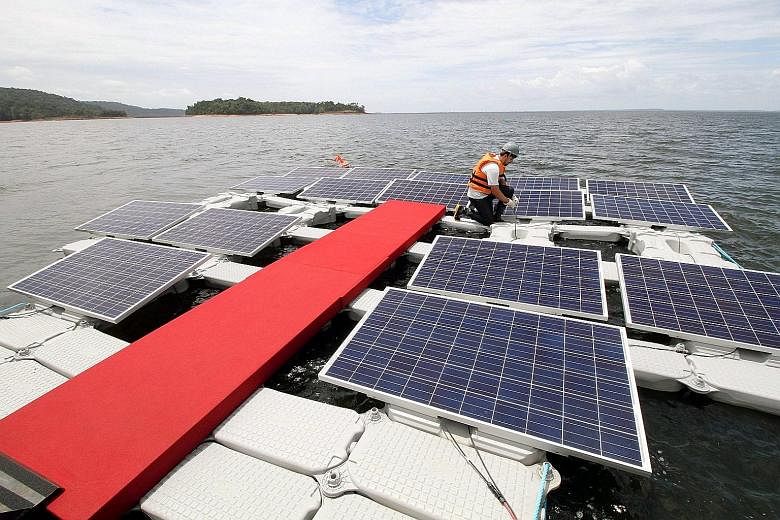PRESIDENTE FIGUEIREDO (Brazil) • Two decades ago, a section of the Amazon rainforest was flooded to build a dam that would produce electricity - a move that critics blasted as an environmental crime.
The artificial lake is so vast that, from the dam's wall, the horizon barely comes into view.
The dam, which flooded 2,400 sq km of rainforest, was ordered built at great expense under Brazil's 1964-85 military regime.
But when it comes to generating electricity, the dam is a bust. The Balbina hydroelectric power plant, inaugurated in 1989, currently produces a mere fifth of its maximum output of 250MW.
Now, officials want to use the dam for floating solar panels.
"This is one of the biggest environmental crimes that engineering has committed in this country," said Energy and Mining Minister Eduardo Braga. "How can we mitigate the cost of this crime? By improving the cost-benefit relationship of this power station."
He was speaking at a ceremony inaugurating the use of the panels.
Such panels are not new, but using them on a hydroelectric dam's artificial lake is novel.
The hybrid system uses the existing and under-used power transmission infrastructure, as well as the flat water surface. There is no need to buy or expropriate new land.
Brazil gets 60 per cent of its electricity from hydroelectric power plants. But a severe drought has enveloped much of the country, so water levels at many dams have dropped to dangerously low levels.
The Balbina pilot project, to be completed by next year, consists of a large platform with 50,000 sq m of solar panels, about the size of five football fields.
The panels can produce 5MW of electricity, enough to supply 9,000 homes with power.
Engineers hope to increase the output to 300MW, allowing Balbina to produce electricity for 540,000 homes.
"We're going to transform the hydroelectric power generators, which have limitations because of the weather, into unlimited power producers because they will also use solar energy," said Sunlution president Orestes Goncalves. His company partnered with French firm Ciel et Terre to install the panels at Balbina.
The engineers have not said how much cheaper the electricity generated could be for local residents, but one of the project's long-term goals is to bring down utility prices.
Separately, engineers will measure the efficiency of this hybrid model with floating solar panels at two very different locations - at Balbina, where the weather is hot and humid, and at a dam located in the hills of the semi-arid north-eastern state of Bahia.
If the system is successful, officials hope to expand it through public tenders.
AGENCE FRANCE-PRESSE

